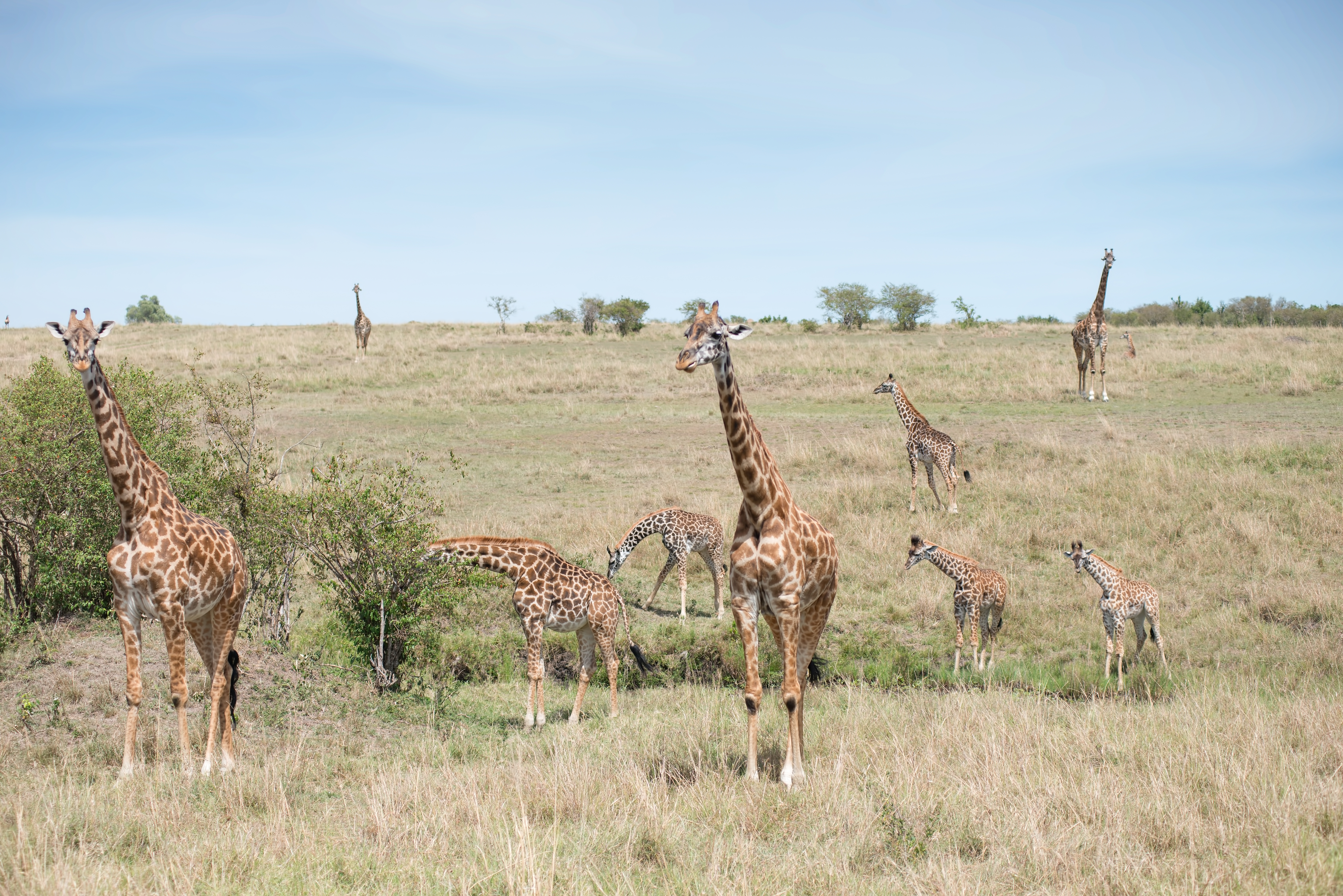How AWF’s Giraffe Conservation Strategy Tackles a Growing Crisis

Giraffes in an African Landscape
Giraffe populations have declined by 40% in the past three decades, with fewer than 70,000 mature individuals remaining in the wild—a stark contrast to the 1980s figures of over 155,000. This alarming trend prompted the International Union for Conservation of Nature (IUCN) to elevate giraffes’ conservation status from “least concern” to “vulnerable” in 2016.
The situation is particularly dire for certain subspecies, with the Kordofan and Nubian giraffes totaling around 4,500 mature adults, now listed as critically endangered and the reticulated giraffe as endangered. The decline of these majestic creatures is driven by five primary threats: habitat loss, inadequate law enforcement, ecological changes, climate change, and a lack of public awareness.
In response to the threat, the African Wildlife Foundation (AWF), a member of Kenya’s National Giraffe Conservation Task Force, has collaborated with partners to launch comprehensive conservation initiatives. These include bolstering species protection, refining land management, synchronizing research and monitoring of giraffe populations, and amplifying education and awareness efforts.
AWF’s Impact in Tsavo and the Maasai Steppe
• AWF has partnered with the Anne Innis Dagg Foundation to implement a giraffe conservation project in Mkomazi National Park and its surrounding areas. The primary objective is to enhance giraffe conservation by establishing anti-poaching operations, conducting community outreach and awareness meetings, and providing conservation education to primary and secondary school students.
• AWF has established a haven for giraffes in Tsavo and the Maasai Steppe. As of 2023, our efforts have protected 24% of Africa's giraffe population, which amounts to over 7,800 individuals. This achievement reinforces AWF's aim to protect 82% of giraffe populations by 2030.
• In 2023, AWF's anti-poaching efforts in the ecosystem intensified. Over 846 patrols and joint operations covered a vast 8,262 km2. These efforts led to the arrest of twelve poachers and the recovery of illegal equipment, including 131 wire snares and seven motorbikes.
• AWF's training programs have empowered 33 community scouts and 17 wildlife monitors and have reached over 3,458 members of the local community through skill development and awareness campaigns. Additionally, they have inspired the next generation of wildlife guardians by educating over 6,473 students.
Saving Nubian Giraffes
• Uganda is home to over half of the global Nubian Giraffe population. This success stems from the Uganda Wildlife Authority’s (UWA) strategic measures, bolstered by AWF and its partners.
• A pivotal component of these strategies is the translocation of giraffes within Uganda’s national parks, which has been instrumental in fostering population growth, enhancing genetic diversity, and addressing localized threats. Noteworthy translocations have occurred in Lake Mburo, Murchison Falls, Kidepo Valley, and Pian Upe Game Reserve.
• In 2022, the African Wildlife Foundation (AWF) organized a three-day workshop in the Kidepo landscape, which brought together key stakeholders from Uganda, South Sudan, and Kenya. The workshop was held as part of the development of the Kidepo Landscape Conservation Plan for 2023-2032. This plan emphasizes giraffe conservation and habitat connectivity as crucial priorities for stakeholders to focus on and invest in securing.
• AWF has received funding from the Maltz Family Foundation to work with the Uganda Wildlife Authority and other key stakeholders in the Kidepo and Murchison landscapes. The project goals are to raise community awareness of giraffe protection, strengthen monitoring and management of giraffes, and enhance collaboration for the Protection of giraffes at the National and Landscape levels.
Looking to the future, AWF aims to cultivate alternative livelihoods to dissuade communities from poaching. Enhanced awareness campaigns and upgraded equipment for wildlife monitors are set to amplify anti-poaching initiatives further.
World Giraffe Day is an opportunity to acknowledge the significant progress achieved by AWF and its partners in giraffe conservation. As we commemorate this day, let us pledge our support to AWF’s continued efforts to preserve giraffes and the entirety of Africa’s invaluable wildlife.
Key Points:
• Giraffe populations have plummeted by 40%, prompting IUCN to classify them as “vulnerable.”
• AWF’s strategy focuses on habitat protection, anti-poaching measures, research, and education.
• AWF’s work in Tsavo, and the Maasai Steppe has safeguarded over 7,800 giraffes.
• Partnerships like the one with the Anne Innis Dagg Foundation, the Maltz Family Foundation and others further expand conservation efforts.